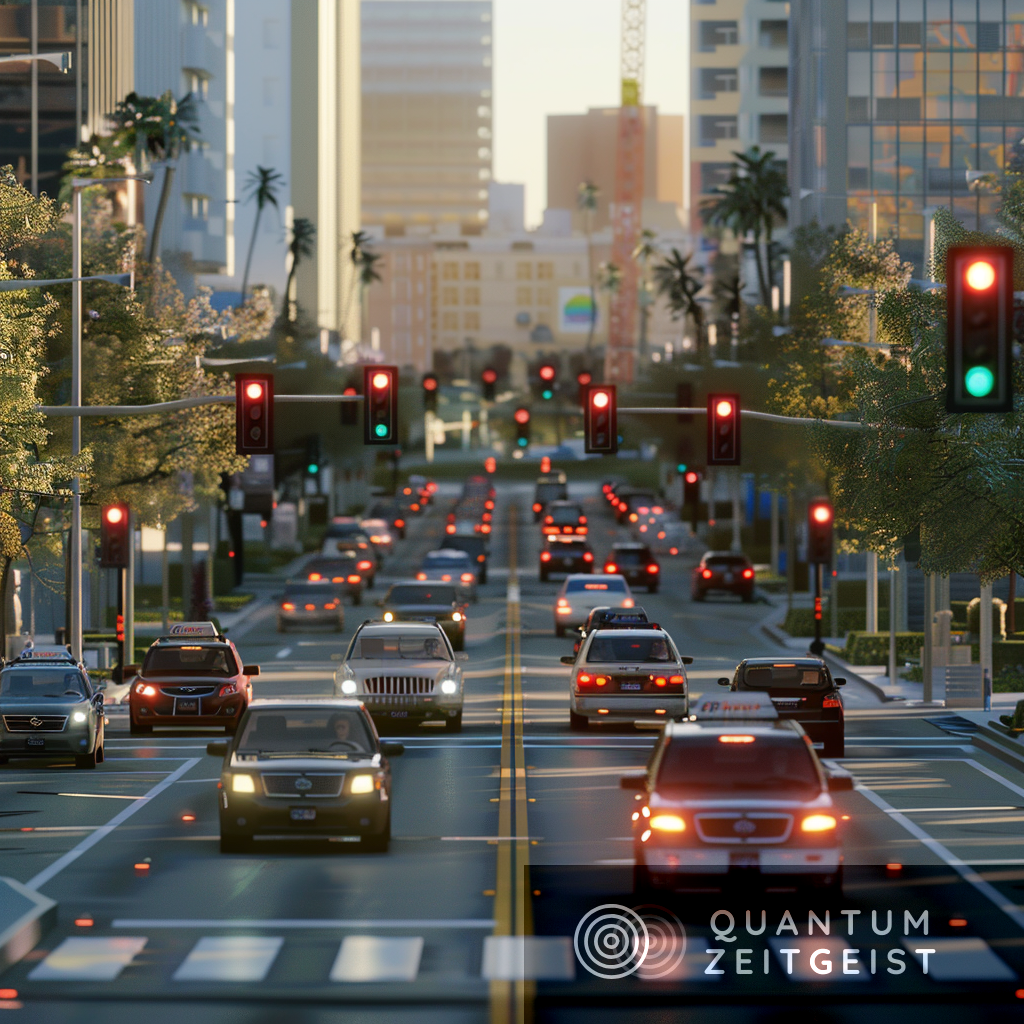The article discusses the purpose and application of traffic flow simulation, focusing on the development of macroscopic and microscopic models. These models, which require the use of supercomputers due to the large amount of calculations involved, aim to simulate traffic dynamics as realistically as possible. The models are tested on various road scenarios, providing insights into traffic dynamics and the impact of road changes on capacity. The use of supercomputers and the development of special parallel algorithms are highlighted as crucial for efficient traffic flow simulation. The findings can be used to improve traffic management and planning in cities.
What is the Purpose of Traffic Flow Simulation?
The primary objective of the study is to simulate the dynamics of traffic flows on city road networks and to systematize the current state of affairs in this area. The introduction of the study states that the development of intelligent transportation systems, which are an integral part of modern transportation technologies, is coming to the fore. These systems contain adequate mathematical models that allow for the simulation of traffic as close to reality as possible.
The necessity of using supercomputers is also noted due to the large amount of calculations involved, therefore the creation of special parallel algorithms is needed. The beginning of the article is devoted to the up-to-date classification of traffic flow models and characterization of each class, including their distinctive features and relevant examples with links.
The main focus of the article is shifted towards the development of macroscopic and microscopic models created by the authors and determination of the place of these models in the aforementioned classification. The macroscopic model is based on the continuum approach and uses the ideology of quasigasdynamic systems of equations.
How are Traffic Flow Models Classified?
The article provides a modern classification of traffic flow models, discussing the distinctive features of each class with relevant examples. The models are divided into macroscopic and microscopic models, each with its unique characteristics and applications.
Macroscopic models are based on the continuum approach and use the ideology of quasigasdynamic systems of equations. These models are advantageous compared to existing models of this class due to their ability to simulate traffic as close to reality as possible. The model is presented both in one-dimensional and two-dimensional versions, with both versions featuring the ability to study multilane traffic.
On the other hand, microscopic models are based on the cellular automata theory and the single-lane Nagel-Schreckenberg model. These models are generalized for the multilane traffic scenario and incorporate various behavioral strategies of drivers.
What are the Applications of Traffic Flow Models?
The article presents the test results of modeling vehicle dynamics on a road fragment with local widening and on a road fragment with traffic lights, including several variants of traffic light regimes. In the first case, the calculations allow drawing interesting conclusions about the impact of a road widening on a road capacity as a whole.
In the second case, the models help to select the optimal regime configuration to obtain the green wave effect. The green wave effect refers to the phenomenon where a series of traffic lights (usually three or more) are coordinated to allow continuous traffic flow over several intersections in one main direction.
The microscopic model is also tested by simulating traffic on a real section of the transport network in the center of Moscow. Special algorithms are implemented to navigate transport nodes in the network according to traffic rules, adapted for parallel computations.
How are Supercomputers Utilized in Traffic Flow Simulation?
The large amount of calculations involved in traffic flow simulation necessitates the use of supercomputers. The creation of special parallel algorithms is needed to effectively utilize the computational power of supercomputers.
The test calculations for the models were performed on the K-100 supercomputer at the Keldysh Institute of Applied Mathematics of the Russian Academy of Sciences. The use of supercomputers allows for the simulation of traffic dynamics on a large scale, such as the entire transport network of a city.
The use of supercomputers also enables the implementation of complex algorithms, such as those needed to navigate transport nodes according to traffic rules. These algorithms are adapted for parallel computations, allowing for efficient use of the supercomputer’s resources.
What are the Key Takeaways from the Study?
The study presents a comprehensive overview of the current state of traffic flow simulation, including the classification of models, the development of new models by the authors, and the application of these models in real-world scenarios.
The use of supercomputers is highlighted as a crucial factor in traffic flow simulation due to the large amount of calculations involved. The study also emphasizes the importance of developing special parallel algorithms for efficient use of supercomputer resources.
The test results of the models provide valuable insights into traffic dynamics, such as the impact of road widening on road capacity and the optimal configuration of traffic light regimes to achieve the green wave effect. These findings can be used to improve traffic management and planning in cities.
Publication details: “Simulation of traffic flows based on the quasi-gasdynamic approach and the cellular automata theory using supercomputers”
Publication Date: 2024-02-01
Authors: В. Ф. Тишкин, Marina A. Trapeznikova, Antonina Alexandrovna Chechina, Natalia G. Churbanova, et al.
Source: Kompʹûternye issledovaniâ i modelirovanie
DOI: https://doi.org/10.20537/2076-7633-2024-16-1-175-194

